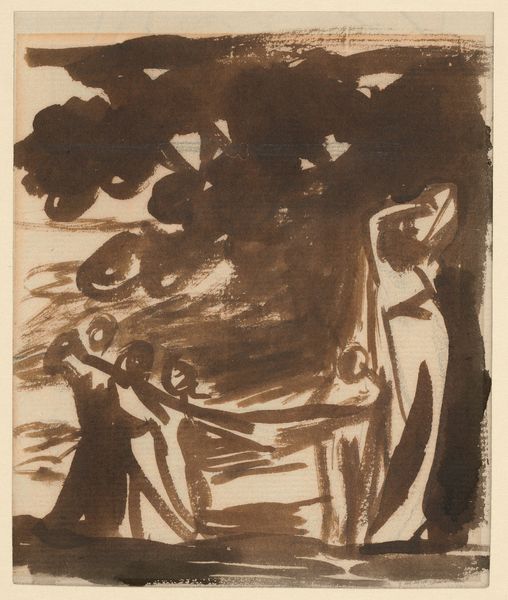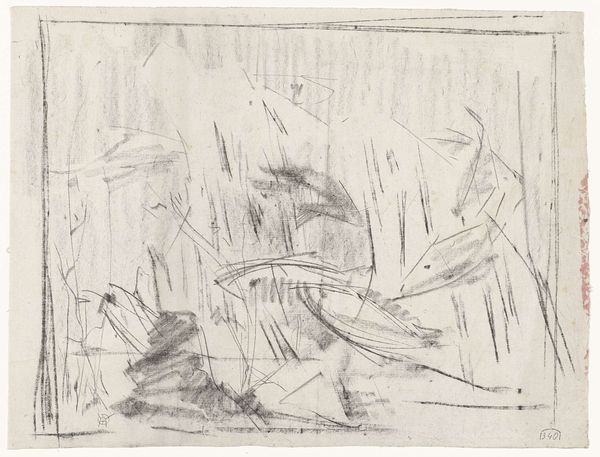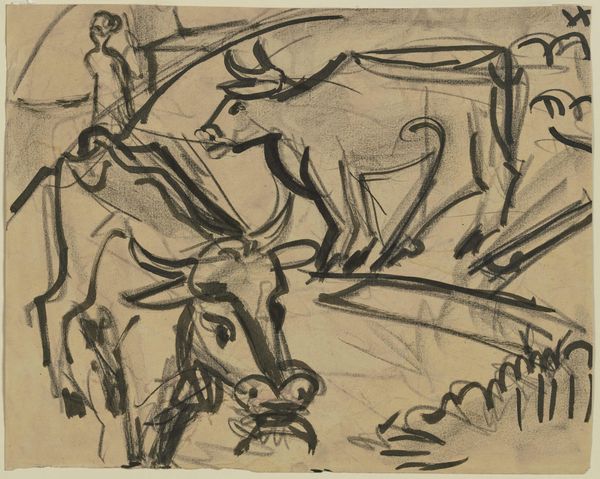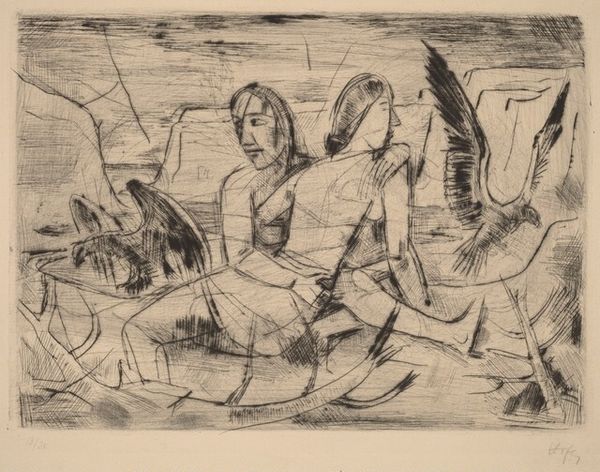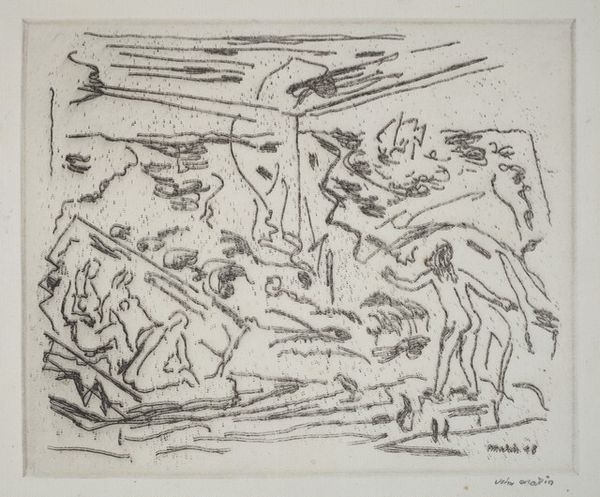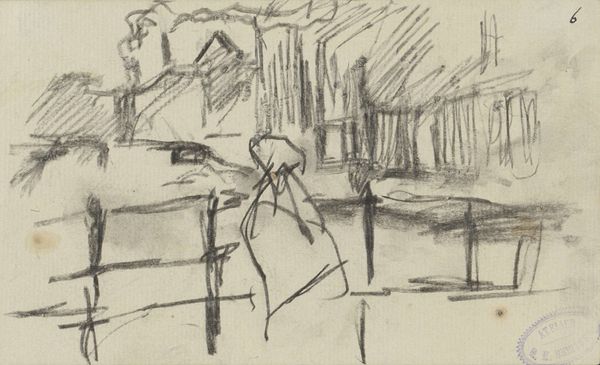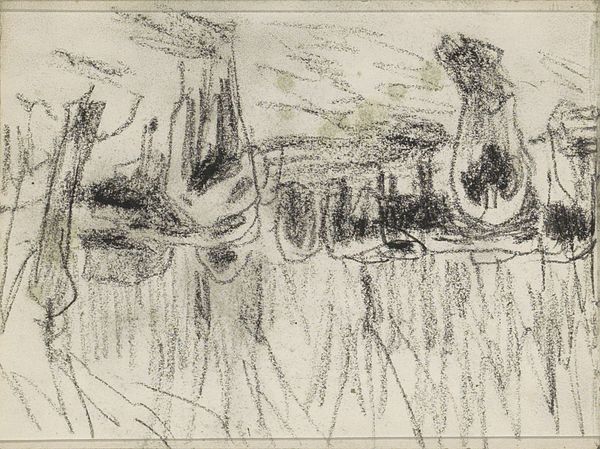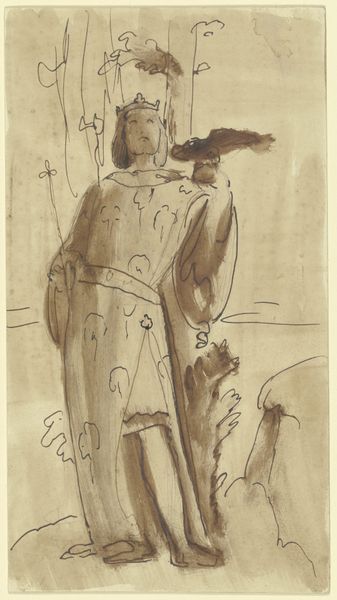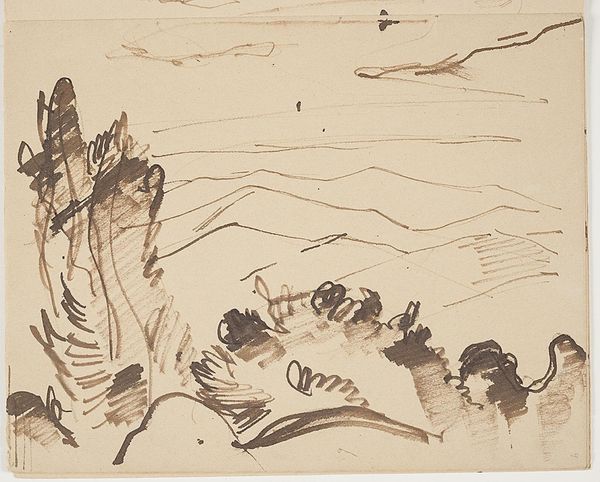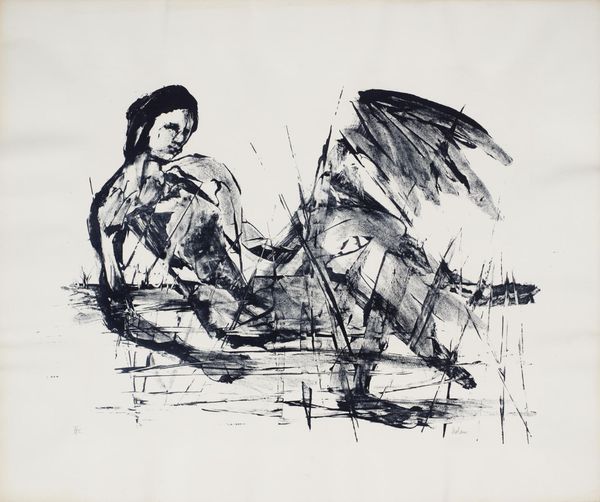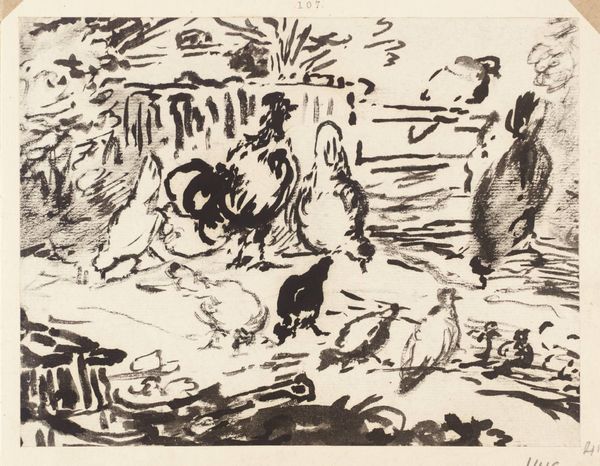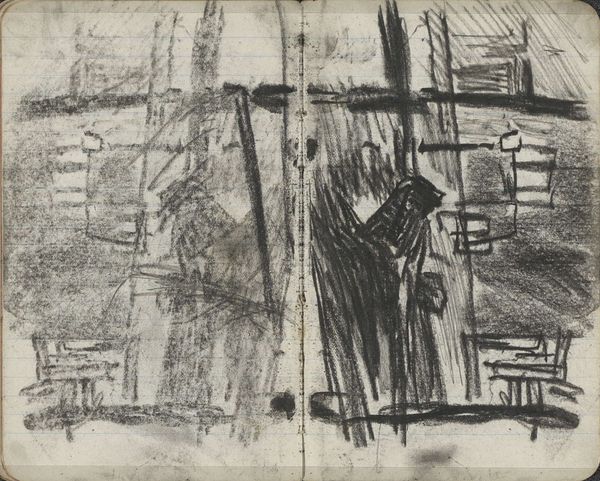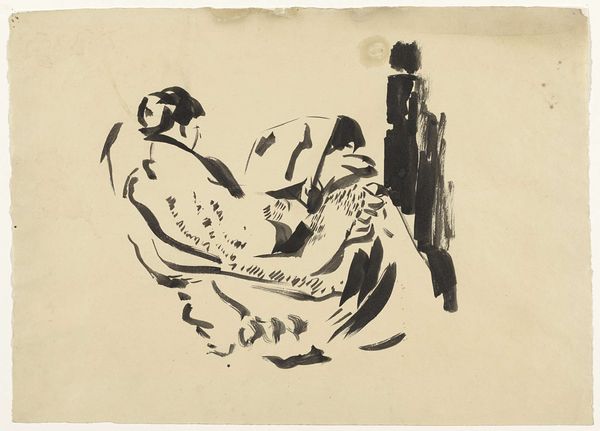
drawing, paper, ink
#
drawing
#
figuration
#
paper
#
ink
#
abstraction
Copyright: National Gallery of Art: CC0 1.0
Curator: Let's turn our attention to this intriguing work: "Two Standing Figures" by Mark Rothko, rendered in ink on paper. Editor: My immediate impression is one of contained chaos. There’s this stark juxtaposition of order and disarray in how these figures are represented. What can you tell me about the context of its creation? Curator: It’s fascinating to consider this piece within the broader context of Rothko's career. We often think of him as the master of abstract color fields, but this drawing reveals his engagement with figuration, however abstracted, at some point in his development. The notion of "standing" implies power and status, especially considering the figures occupy a staged-like space, or maybe even a precarious structure. So the social element comes up in my mind and what kind of historical interpretation is possible to read from these signs. Editor: Yes, the composition feels loaded with symbols! The stark contrast of white and ink creates an ethereal feel, giving the figures a dreamlike, almost otherworldly quality. The use of ink strokes reminds me of quick sketches that capture more the idea of a person rather than any detailed appearance. Almost like Rothko's rendition of cultural heroes stripped to bare representation. Curator: Indeed. Think about the period, and the way representation was perceived. These aren't just portraits; they're almost deconstructed portraits, perhaps commenting on the instability of identity itself, especially within the turmoil of the mid-20th century, when notions of race and gender were so volatile and transforming, as we moved through Civil Rights movements, feminist theories, and broader global decolonization. The background strokes suggest more than just environment – they infer cultural frameworks and the constraints imposed by them. Editor: I find myself contemplating how the figures are rendered with such raw intensity. They embody the struggle of holding onto something real while surrounded by so much...abstraction. Their stances indicate determination. They carry resilience from the past into whatever's next. Curator: Absolutely. Considering how Rothko transitioned toward pure abstraction later, this piece could be seen as a crucial bridge. The negotiation of space between those shapes can lead us to reflect on our historical burdens. The "figures," or the representation of them, push us toward our collective cultural narrative. Editor: In a way, it serves as a potent reminder that every abstract expression holds traces and echoes of figures, forms, and symbolic meanings waiting to be discovered. Curator: Precisely. It invites us to unearth layers of socio-political thought, which, despite the artist’s abstraction, reveal insights from historical events.
Comments
No comments
Be the first to comment and join the conversation on the ultimate creative platform.
